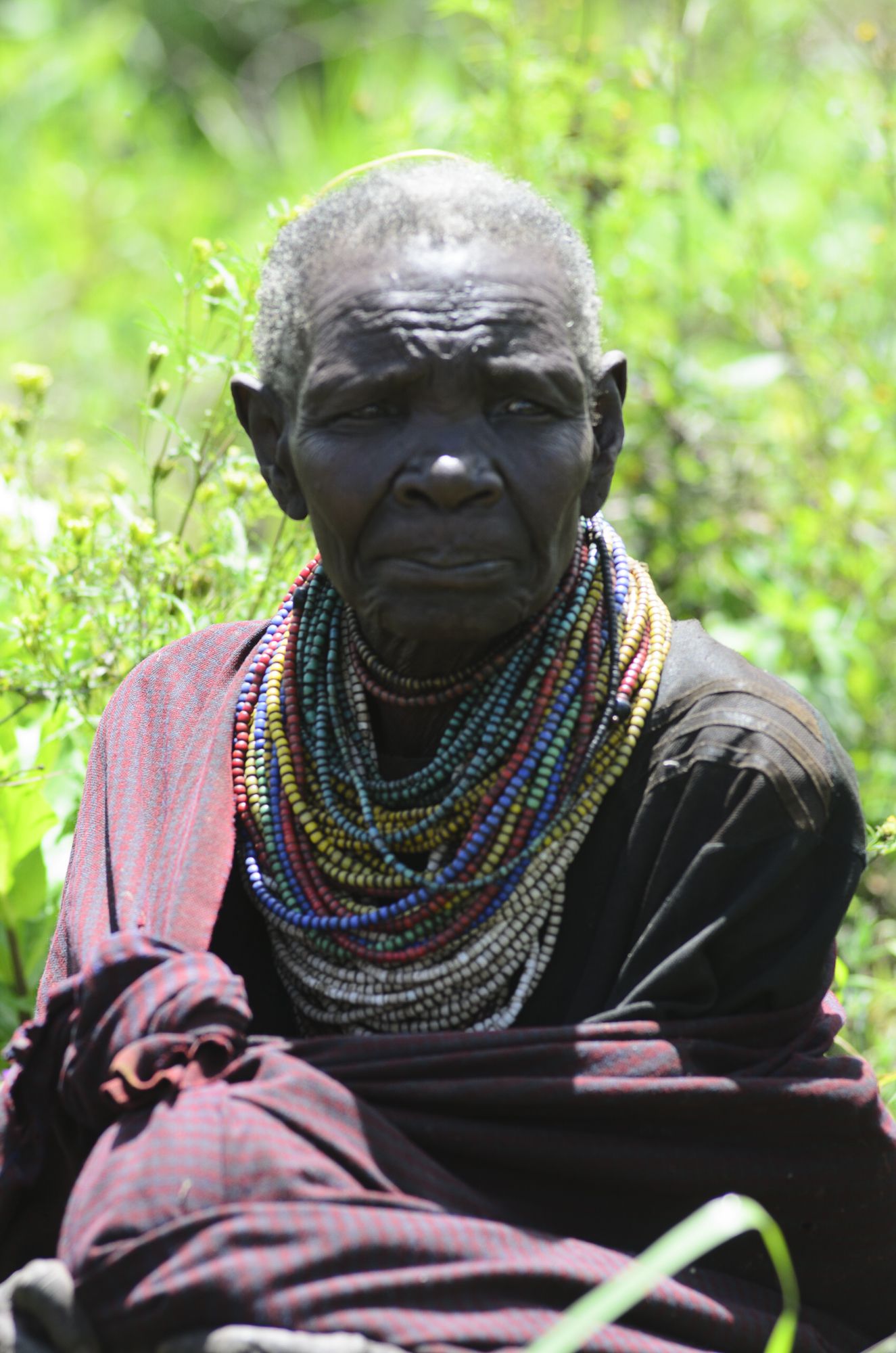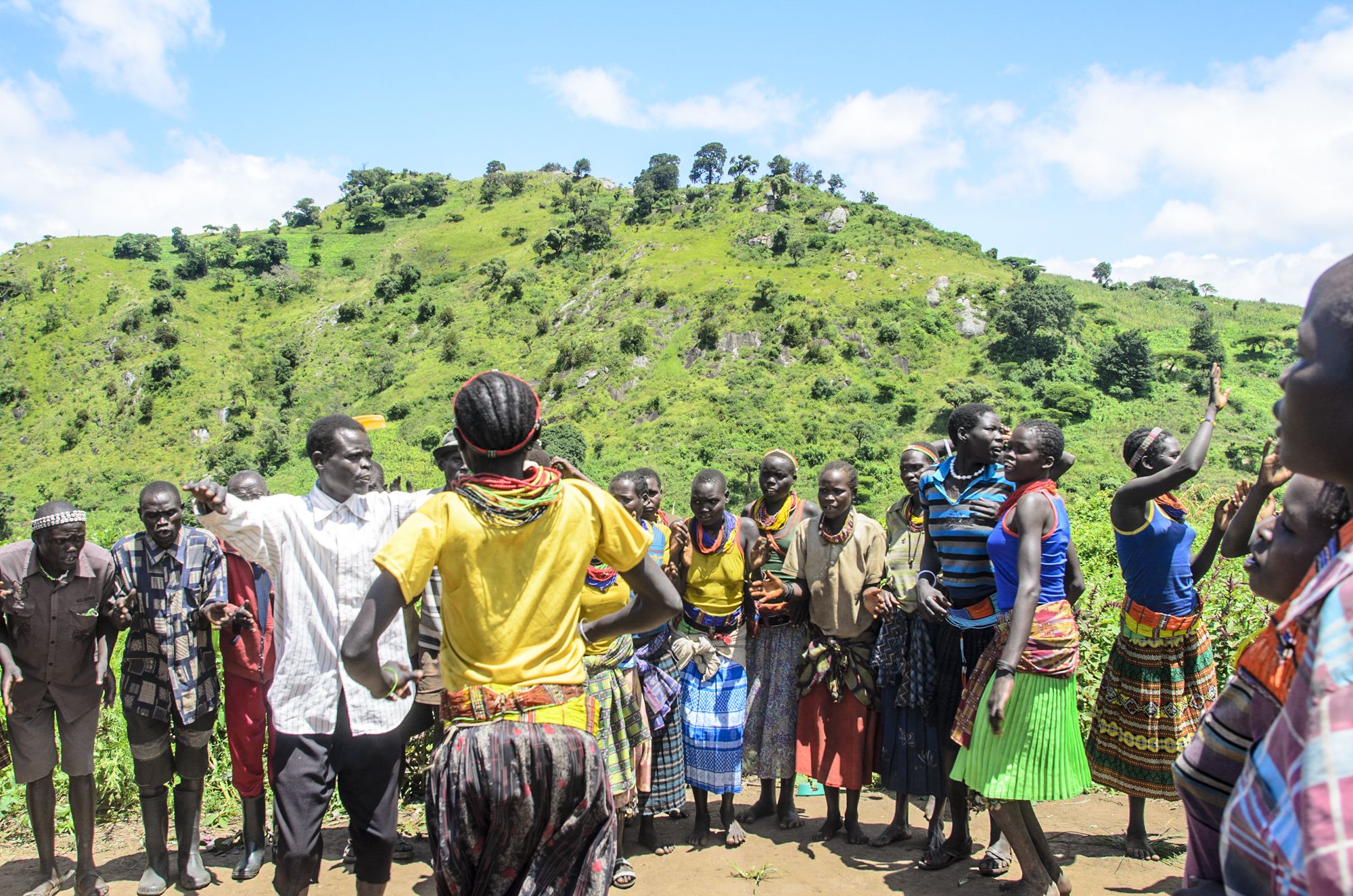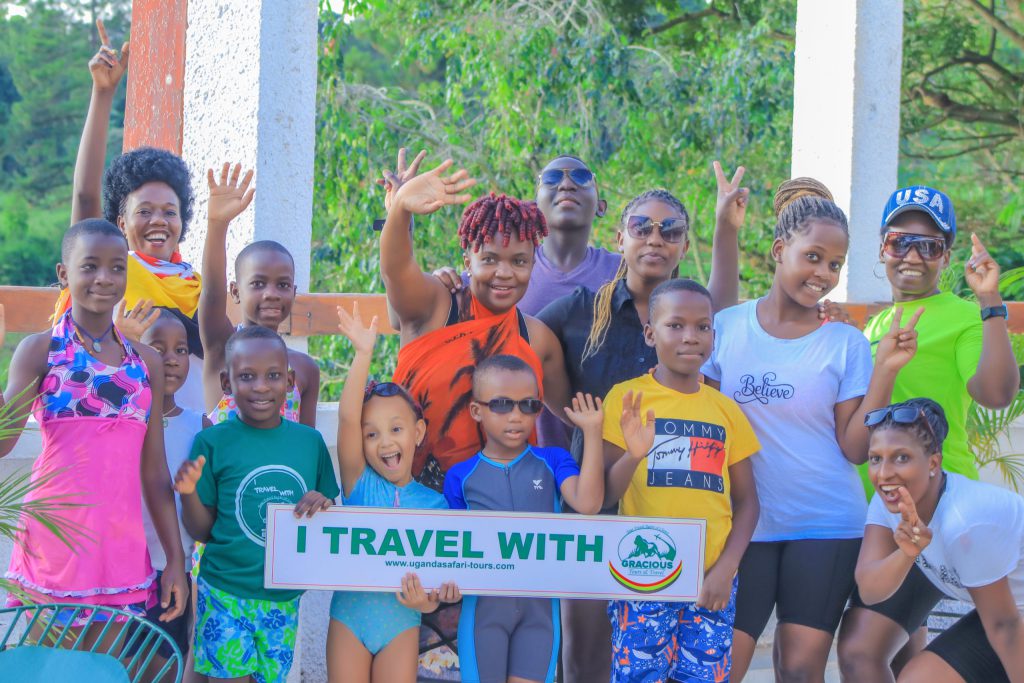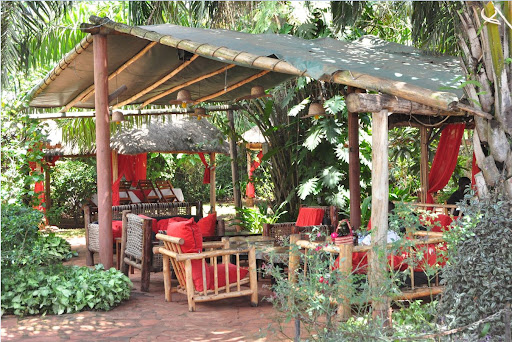The social life of the Karamojong is really fascinating. This is due to the fact that they are into two generation age sets. Learning about Karamojongs is one epic activity you shouldn’t miss out while on a Uganda Safari tour. They include the senior generation age set that consists of the elders also known as Mountains. And the junior generation group that comprises of the young men also known as Gazelles.
Each generation age set further divides into about five age groups. These differentiate by the use of names of animals, plants or geographical features. This different age group identity is from their unique body piercings, body ornaments like earrings; scarification and tattoo patterns on the different parts of the body.
These generations consist of people within the same age ranges. Because a young man cannot be in the same generation with his father or grandfather. Women groups categorize into age groups that match with those of the men. The initiation of the boy to graduate into the junior generation age set is by spearing an Ox. Whereas the initiation of women is marriage with cattle.
The Family of the Karamojongs (Social life of the Karamojong in Uganda)
The original social units are the family. And the clan with the clan heads (elders) that form the council of elders as the highest political power.

The council of elders is responsible for making the society’s decisions. Secondly, settling disputes amongst the community members, giving punishments to the wrongdoers. And negotiating peace or reconciling with enemies from other communities. Lastly, conducting council meetings, ritual ceremonies and public gatherings known as Ekwokwa.
Karamojong believes that the elders have divine powers or are at least attached to divine powers. Addedly, some elders are known as Ekadwaran (prophet) meaning that they foretell. They believe in Akuj as someone with supreme powers. And more intelligent than anyone else who usually makes the Ekadwaran dream thus prophesying about certain situations.
These prophets have the power to control and interpret their dreams. Which makes their people and people from distant tribes believe in them. Some of the prophets choose to live celibate lives. Thus being highly respected by the locals as it is uncommon for a grownup man not to have a wife. These Prophets have supernatural powers of healing the sick. Making rain bringing disease or health, causing drought and preventing calamities.
A Karamojong elder Pondering into the future.
The Karamojong also have seers both male (emuron) and female (amuron) who play an important role in the Karamojong community of foretelling by the use of intestines of a slaughtered animal. These seers provide guidance to the community by reading the intestines to forecast weather. They also foretell security threats like raids which will help them find a solution to the coming problem.
The Karamojong live in traditional villages known as Manyattas. These contain granaries, storehouses and residential huts built in the internal compounds. The fence consists of thorny woods to prevent intruders from attacking them. These divide into territorial groups forming either small neighborhoods or several neighborhoods that make up localities.
The neighborhoods consist of people that utilize the same natural resources. And aswell practice the same rituals or come together for celebrations and social interactions. They have special sacred grounds that are usually located under a specific tree in every neighborhood. These grounds are known as Akiriket and are usually used during initiation ceremonies when a certain age set is being named.
Settlements are into category of permanents settlements. That consists of residences and gardens that are into territories with a permanent water source. They also have temporary settlements which are usually set up as camps. Composed of human shelters and kraals containing cattle, goats and sheep.
The availability of water and pastures for the animals determines the construction of these settlements. The Karamojong live communally. Whereby extended families stay together or near each other and help each other execute the daily chores.
Labor among the Karamojong is according to status, gender, age, responsibility, and ability. Whereby young children of about four years start working along with their parents. Young girls of about seven years nurse younger children. As well as do house chores and build mini huts while older females of over fourteen build bigger residential huts.
Women at the manyattas cook food, collect firewood, gather wild fruits and sour vegetables. They also cultivate and grow food during the rainy season around the manyattas. Women at the kraals milk the cows, fetch water, prepare food and blood, water the animals. And also carry food from the manyattas to the kraals and vice versa.
Young Karamojong boys of seven years participate in the building of small fences around the manyattas as well as watch over kid goats at the kraals and manyattas. The older boys (adolescents) take care of calves and cattle. Whereas young men bleed the cows, shepherd large herds and protect the community from intruders.
Young Karamojong men move with their livestock while searching for water and pastures in the neighboring areas during the dry season. The Karamojong believe that all the cattle including that of the neighboring tribes belong to men. And that is why they raid and take away other people’s cattle.
These young men also known as warriors participate in the raiding in order to show how strong and brave. Big and fierce animals like lions, elephants, hippos to kill have reduced which has forced them to resort to cattle rustling as a way to show their bravery. Men can marry as many wives as they want as long as they are able to pay the bride price. And that is cattle.

Karamoja region has low literacy rates because the Karamojong have shunned foreign education as well as the western culture. Some Karamojong communities banish whoever allows his or her children to go to school and declared as an enemy of theirs. Currently due to the introduction of Christianity in the region, some Karamojong have sent their children to school.
Youthful Karamojongs dancing to the traditional songs during their leisure time.
Cattle hold a lot of significance in the Karamojong culture both economic and social values. They are a source of meat, milk and blood for consumption; it’s fat prepares food and is also acts as a cosmetic; the droppings are used as fertilizers in the gardens; the scrota are dry and help in the making of bags; hooves and horns make food containers, feather boxes. Whereas skirts, sandals, sleeping skins are got from hides and skins.
Cattle are sacrifice to the gods and can also be gifted to friends or relatives. The Karamojong rare other animals like goats, sheep, oxen as well as some donkeys and Carmels. Which are mostly for the wealthy people. Food products from cattle supplemented with sorghum, beans, maize, cucumbers and marrow grown at the Karamojong manyattas.
The Ik people who inhabit Mount Morungole expel their children out of the shelters as early as three children. These children form groups with their age mates build a hut and start staying together. IK people were originally cattle herders but later became agriculturalists, hunters and bee keepers after the Karamojong had taken away their cattle.
They live in small villages they call as Odoks. These are surrounded by walls with small gates. Their villages are organized in clusters and set up in the mountains thus being called the mountain people by Turnbull. They decided to settle in the mountain because they are weak thus being prone to raids by the Karamojong and other cattle rustling tribes.
The Karamojong are so proud and attached to their culture. Thereby dressing up traditionally with girls wearing kilt like skirts, women wear beautiful beaded necklaces. These are supplemented by fashionable hairstyles. While men tie colored blankets like cloaks or shawls similar to those worn by the Masai. Put on one side of the shoulders together with a hat adorned with ostrich feathers. While others wrap a cloth around their waists to cover the lower body.
Some Karamojong clans and tribes pierce their bodies. As well as practice scarification of arms, foreheads, chests. Other body parts in both men and women for identification besides symbolizing beauty and strength.
Also read: The Mountain people of Karamojong, The Batwa People ,


